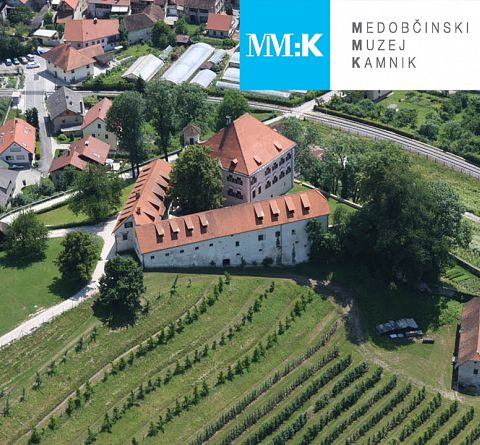Museum stories
Belt Clasp, Late 19th Century, Brass
A belt clasp with three elongated links featuring a floral motif and three shorter ones, decorated with baroque child faces, including intermediate chains and a fastening clasp. Length: 102 cm, Width: 3 cm. It was made in the late 19th century. Belt clasps were typically an accessory to women's ...
Read more
Read more
Baptismal medallion, silver, 1888
Baptismal medallion with the image of John the Baptist baptizing Jesus in the Jordan River, engraved on the reverse inscription In memory of June 13, 1887 - June 13, 1888 from your bapt. godfather F.P. The baptismal ceremony protected the new born child from an evil fate, enabled him to enter ...
Read more
Read more
Jakob Savinšek, Female figure/Rhythm II, 1953
Jakob Savinšek, Female figure/Rhythm II, 1953, bronze, sign. d. sp. SAVIN 1/1 We present a new donated work by author Jakob Savinšek. It is a donation from Darja Marinček Prosenc, whose mother, a well-known theater and film actress, Ivanka Mežan, was also a friend of our well-known actress ...
Read more
Read more
Tokens made of glass paste, unknown sites, Sadnikarjeva collection, 1.-4. century AD
Tokens were used in the Roman world for a variety of purposes, including to mark ownership, as tokens for games (e.g. for board games, games in casinos or other premises, for gambling), and for rituals and "recording" of information. One of the uses of tokens was also in a military context. ...
Read more
Read more
Torilo, Velika planina, first half of the 20th century
»Torilo« is a wooden, usually round bowl, turned and hand-made from one piece of wood, which has holes at the bottom for draining the whey from the curd or salty cheese. Shepherds made them from different types of wood, from black hornbeam, elm, maple, and pear. The bottom of the bowl was ...
Read more
Read more
Devotional painting of St. John the Evangelist, 18th century
The embroidery depicts St. John the Evangelist with a chalice with a snake and an eagle on a lawn with flowers. Legend has it that once a pagan priest offered him a goblet of poisoned drink and said to him: "If you drink this and don't die, I too will accept faith in your God." The apostle took ...
Read more
Read more
Stone axes, various locations, 4.-3. millennium BC
Common finds from the Late Stone and Copper Ages are stone axes. Such axes were still in use in the Bronze Age. A considerable number of them have been found in Slovenia. The axes in our collection were found randomly. In the photo, most are from Sadnikar's collection and unknown locations (three ...
Read more
Read more
Bones of a cave bear, Mokriška jama, 30.000 BC.
The Mokriška cave is located 1500 m above sea level, below Mokrica (1853 m). In addition to archaeological artifacts (stone and bone tools left behind by man), it is known for many bear bones. That is why it is also called Medvedova jama. They were already found in 1837 by Henrik Freyer, curator ...
Read more
Read more
Branko Uršič, Bamboo Armchair, 1977
The Bamboo armchair, designed by the Slovenian designer Branko Uršič for the Stol Kamnik factory, is made of beech wood and bamboo mesh. The design and prototype of the armchair were made in 1977, and the Stol Kamnik factory started producing it regularly from 1980. The use of round bars made ...
Read more
Read more
Reliquaries, 18th century
Reliquary (medieval Latin reliquarium from reliquiae = remains) in Christianity, a chest for storing and displaying (worshiping) the remains of St. cross, remains of martyrs, saints, their clothing, etc. The existence of reliquaries has been attested in Christianity since the 4th century. ...
Read more
Read more



